Nikon D70 Repair manual
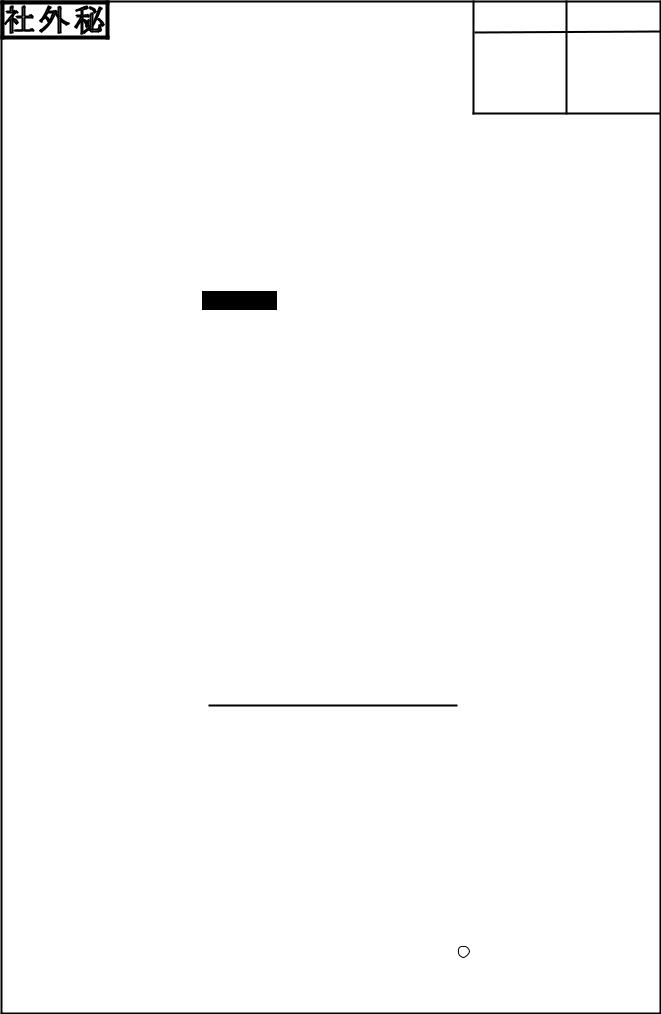
VBA10401-R.3623.A
|
|
|
TEMPORARY


 VBA10401
VBA10401
REPAIR MANUAL
Copyrigh 2004 by Nikon Corporation. All Rights Reserved.
!!
Printed in Japan February 2004

|
|
|
VBA10401-R.3623.A |
|
Specifications |
||
Type |
Single-lens reflex digital camera with interchangeable lenses |
||
Effective pixels |
6.1 million |
|
|
CCD |
23.7 × 15.6 mm; total pixels: 6.31 million |
||
Image size (pixels) |
• 3008 × 2000 (Large) |
• 2240 × 1448 (Medium) |
|
|
• 1504 × 1000 (Small) |
|
|
Lens mount |
Nikon F mount (with AF coupling and AF contacts) |
||
Compatible lenses* |
|
|
|
Type G or D AF Nikkor All functions supported |
|
||
Micro Nikkor 85mm |
All functions supported except autofocus and some |
||
f/2.8D |
exposure modes |
|
|
Other AF Nikkor† |
All functions supported except 3D color matrix metering |
||
|
and i-TTL Balanced Fill-Flash for Digital SLR |
||
AI-P Nikkor |
All functions |
supported |
except 3D color matrix metering, |
|
i-TTL Balanced Fill-Flash for Digital SLR, and autofocus |
||
Non-CPU |
Can be used in mode M, but exposure meter does not |
||
|
function; electronic range finder can be used if maximum |
||
|
aperture is f/5.6 or faster |
||
* IX Nikkor lenses can not be used |
†Excluding lenses for F3AF |
||
Picture angle |
Equivalent in 35-mm format is approximately 1.5 times |
||
|
lens focal length |
|
|
Viewfinder |
Optical fixed pentaprism |
|
|
Diopter adjustment |
–1.6 – +0.5m–1 |
|
|
Eyepoint |
18mm (–1.0m–1) |
|
|
Focusing screen |
Type B BriteView clear matte screen Mark V with |
||
|
superimposed focus brackets and On-Demand grid lines |
||
Frame coverage |
Approximately 95% of lens (vertical and horizontal) |
||
Magnification |
Approximately 0.75× (50-mm lens at infinity; –1.0m–1) |
||
Reflex mirror |
Quick return |
|
|
Lens aperture |
Instant return with depth-of-field preview |
||
Focus-area selection |
Can be selected from 5 focus areas |
||
Lens servo |
• Autofocus (AF): Instant single-servo AF (AF-S); |
||
|
continuous-servo AF (AF-C); predictive focus tracking |
||
|
automatically activated according to subject status |
||
|
• Manual focus (M) |
|
|
- M1 

 -
-
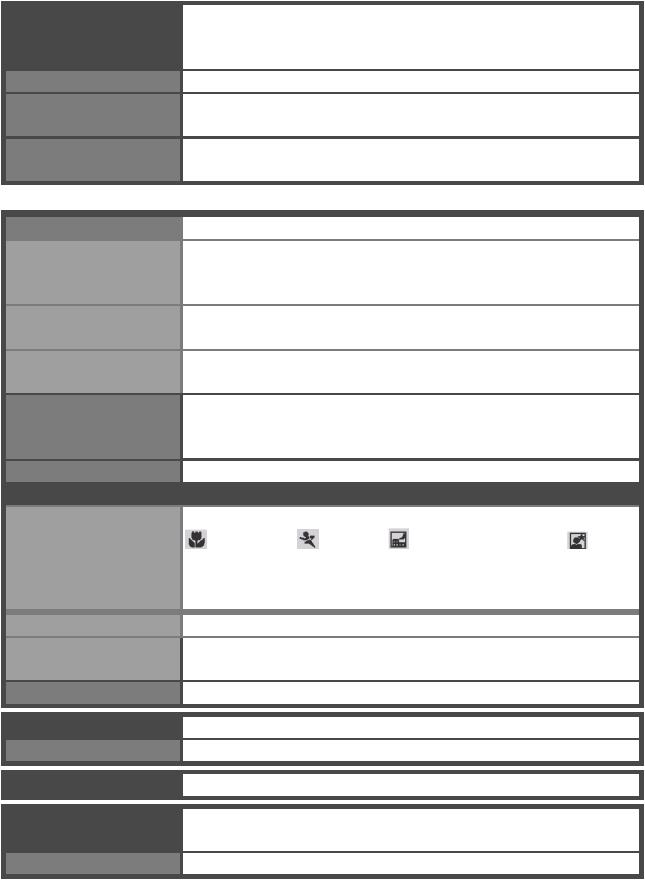
VBA10401-R.3623.A
Autofocus |
TTL phase detection by Nikon Multi-CAM900 autofocus |
|
module with AF-assist illuminator (range approximately |
|
0.5–3.0m/1´8˝–9´10˝) |
Detection range |
–1 – +19EV (ISO 100 at 20° C/68° F) |
AF-area mode |
Single-area AF, dynamic-area AF, dynamic-area AF with |
|
closest subject priority |
Focus lock |
Focus can be locked by pressing shutter-release button |
|
halfway (single-servo AF) or by pressing AE-L/AF-L button |
Exposure |
|
Metering |
Three-mode through-the-lens (TTL) exposure metering |
Matrix |
3D color matrix metering (type G and D lenses); color |
|
matrix metering (other CPU lenses); metering performed |
|
by 1,005-pixel RGB sensor |
Center-weighted |
Weight of 75% given to 6, 8, 10, or 12-mm circle in |
|
center of frame |
Spot
Range
(ISO 100 equivalent, f/1.4 lens, 20°C/68° F)
Exposure meter coupling Exposure control Operating mode
Exposure compensation Bracketing
Meters 2.3-mm circle (about 1% of frame) centered on active focus area
0 – 20EV |
(3D color matrix or center-weighted metering) |
3 – 20EV |
(spot metering) |
CPU coupling
Digital Vari-Program ( auto,
auto, portrait,
portrait, landscape,
landscape,
close up, sports, night landscape, night portrait), programmed auto (P) with flexible program;
shutter-priority auto (S); aperture priority auto (A); manual (M)
–5 – +5EV in increments of 1/3 or 1⁄2EV
Exposure and/or flash bracketing (2–3 exposures in increments of 1/3 or 1⁄2EV)
Exposure lock |
Luminosity locked at detected value with AE-L/AF-L button |
Shutter |
Combined mechanical and CCD electronic shutter |
Speed |
30 – 1/8000 s in steps of 1/3 or 1⁄2EV, bulb, remote |
Sensitivity |
200 – 1600 (ISO equivalent) in steps of 1/3 EV |
White balance |
Auto (TTL white-balance with 1,005 pixels RGB sensor), |
|
six manual modes with fine-tuning, preset white balance |
Bracketing |
2–3 exposures in increments of 1 |
- M2 

 -
-

|
|
|
|
VBA10401-R.3623.A |
Built-in Speedlight |
• |
, |
, |
, : auto flash with auto pop-up |
|
• P, S, A, M: manual pop-up with button release |
|||
Guide number |
• ISO 200: approximately 15/49 (manual 17/56) |
|||
(m/ft at 20°C/68°F) • ISO 100: approximately 11/36 (manual 12/39) |
||||
Flash |
|
|
|
|
Sync contact |
X-contact only; flash synchronization at up to 1/500 s |
|||
Flash control |
|
|
|
|
TTL |
TTL flash control by 1,005-pixel RGB sensor (CPU lenses only) |
|||
|
• Built-in |
Speedlight: i-TTL balanced fill-flash for digital |
||
|
|
SLR, or standard i-TTL flash for digital SLR (spot metering |
||
|
|
or mode dial set to M) |
||
|
• SB-800 or 600: i-TTL balanced fill-flash for digital SLR, or |
|||
|
|
standard i-TTL flash for digital SLR (spot metering) |
||
Auto aperture |
Available with SB-800 with CPU lens |
|||
Non-TTL auto |
Available with such Speedlights as SB-800, 80DX, 28DX, |
|||
|
28, 27, and 22s |
|||
Range-priority manual Available with SB-800 |
||||
Sync modes |
• |
, |
, |
: front curtain sync, red-eye reduction |
|
• : slow sync, slow sync with red-eye reduction |
|||
|
• |
, |
, |
: front curtain sync and red-eye reduction |
|
|
available with optional Speedlights |
||
|
• P, S, |
A, |
M: front curtain sync, slow sync, rear-curtain |
|
|
|
sync, red-eye reduction, slow sync with red-eye reduction |
||
Flash compensation |
–3 – +1EV in increments of 1/3 or 1⁄2EV |
|||
Flash-ready |
Lights when SB-series Speedlight such as 800, 600, |
|||
indicator |
80DX, 28DX, 50DX, 28, 27, or 22s is fully charged; |
|||
|
blinks for 3s after flash is fired at full output |
|||
Accessory shoe |
Standard ISO hot-shoe contact with safety lock |
|||
Creative Lighting |
Supports Flash Color Information Communication and |
|||
System |
FV lock with built-in Speedlight, SB-800, and SB-600. |
|||
|
SB-800 and 600 also support Advanced Wireless Lighting. |
|||
Storage |
|
|
|
|
Media |
Type I and II CompactFlash memory cards; Microdrives |
|||
File system |
Compliant with Design Rule for Camera File System (DCF) |
|||
|
2.0 and Digital Print Order Format (DPOF) |
|||
Compression |
• NEF (RAW): compressed 12-bit |
|||
|
• JPEG: JPEG baseline-compliant |
|||
- M3 

 -
-

VBA10401-R.3623.A
Self-timer |
Electronically controlled timer with 2 – 20s duration |
Depth-of-field |
When CPU lens is attached, lens aperture can be stopped |
preview |
down to value selected by user (A and M modes) or value |
|
selected by camera (Digital Vari-Program, P, and S modes) |
Monitor |
1.8˝, 130,000-dot, low-temperature polysilicon TFT LCD |
|
with brightness adjustment |
Video output |
Can be selected from NTSC and PAL |
External interface |
USB |
Tripod socket |
1⁄4˝ (ISO) |
Firmware upgrades |
Firmware can be upgraded by user |
Power source |
• One rechargeable Nikon EN-EL3 Li-ion battery; charging |
|
voltage (MH-18 quick charger or optional MH-19 multi |
|
charger): 7.4V DC |
|
• Three CR2 lithium batteries (with MS-D70 battery holder) |
|
• EH-5 AC adapter (available separately) |
Dimensions (W×H×D) Approximately 140 × 111 × 78mm (5.5˝ × 4.4˝ × 3.1˝) |
|
Weight |
Approximately 595g (1lb 5oz) without battery, memory |
|
card, body cap, or monitor cover |
Operating environment |
|
Temperature |
0 – 40° C (32 – 104° F) |
Humidity |
Less than 85% (no condensation) |
•Unless otherwise stated, all figures are for a camera with a fullycharged battery operating at an ambient temperature of 20°C (68°F).
- M4 

 -
-

VBA10401-R.3623.A
Disassembly
WARNING
Due to an internal high voltage area, take extra care not to get an  electric shock when detaching covers.
electric shock when detaching covers.
 After removing covers, be sure to discharge the main condenser according to the instructions of the repair manuals.
After removing covers, be sure to discharge the main condenser according to the instructions of the repair manuals.
Note When disassembling/(re)assembling, be sure to use the conductive mat (J5033) and wrist strap (J5033-5) for static protection of electrical parts.
Before disassembling, be sure to remove batteries orAC power wires.
When disassembling, make sure to memorize the processing state of wires and FPC, screws to be fixed and their types, etc.
Because the low pass filter of the imaging CCD PCB is easily damaged, handle it with enough care.
1. Separate Front and Rear bodies
Bottom Cover
#692
#697
#677×6
Open I/F cover
Bottom cover
- 1 

 -
-

VBA10401-R.3623.A
Rear cover
Remove the TFT-PCB connection FPC from the connector.
TFT-PCB connection FPC
Take out 4 screws (#612).Remove the rear cover.
#612×4
WARNING
Due to an internal high voltage area, take extra care not to get an electric shock when detaching the covers.
 After removing the covers, be sure to discharge the main condenser according to the instructions of the repar manuals.
After removing the covers, be sure to discharge the main condenser according to the instructions of the repar manuals.
Rear cover
Discharge Main condenser
Discharge the main condenser from its both ends.
2KΩ/5W
Main condenser
- 2 

 -
-
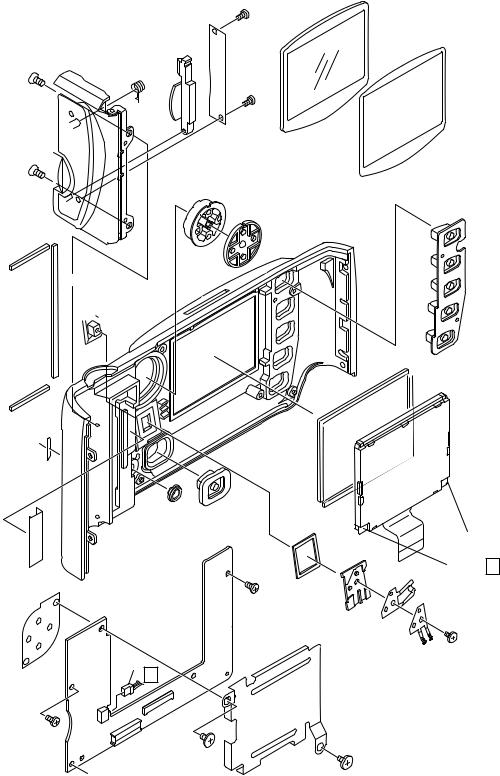
VBA10401-R.3623.A
Disassemble Rear cover
#678×2
#426×2
#425
#443  #444
#444
#409
#414
|
|
#605×2 |
#402 |
#B431 |
#435 |
#432 |
#403 |
#437 |
|
||
|
|
|
#413
#412
#421
 #423
#423
 #404×2
#404×2
#1031
#408 |
#416 |
|
|
|
Black |
|
#420 |
Gray |
|
#417 |
|
|
#418 |
|
#1071 |
#419 |
#668 |
|
|
|
|
|
|
|
#406 |
|
#B2036
 #666×2 #665×3
#666×2 #665×3
- 3 

 -
-

VBA10401-R.3623.A
Memory compression PCB
Remove the USB gasket (#B481) from the memory compression PCB (#B2033).
Remove the connection FPCs from each connector which are connected from the CF PCB, I/F PCB, main PCB, and CCD PCB.
Remove the ferrite core (#1133) from I/F PCB connection FPC.
Take out 4 screws (#679) to detach the memory compression PCB (#B2033).
|
#1133 |
I/F PCB connection FPC |
Main PCB connection FPC |
|
#B481
#B2033
CF PCB connection FPC
#679×4
CCD PCB connection FPC
CCD-PCB unit
Remove the CCD-PCB connection harness.
CCD-PCB connection harness
- 4 

 -
-

Take out 4 screws (#669) to detach the CCD PCB unit (#B3031).
#669×4
#B3031
DC/DC PCB
Remove the solders of 10 wires.Disconnect 3 connectors.
Take out 4 screws (#679) to detach DC/DC PCB (#B1030).
|
|
Black: Top cover GND |
|
Gray: |
Black: |
Brown: Front body FPC |
|
|
|||
SB PCB |
Brown: Main PCB |
||
SB PCB |
|||
|
|
||
Red: |
|
|
|
SB PCB |
|
|
|
Blue: |
|
#B1030 |
|
Battery |
|
|
|
contact- |
|
|
Orange: Battery contact+
#1065 #679×4
VBA10401-R.3623.A
#1025
Black

 : I/F PCB
: I/F PCB
Red
: I/F PCB
#1059
- 5 

 -
-

VBA10401-R.3623.A
Covers
SB pop-up
Cut the tracing film sheet, etc into the below size of piece. Then insert it into the clearance of the top cover pop-up part as shown right, and pop it up by sliding the sheet in the direction of the arrow.
Approx.2cm
Approx. 4cm
First, remove the front cover (#B24).
#B26
#631
 #684
#684
#611×2 |
#608 |






 #28
#28 



 #776
#776 



 #611×2
#611×2
#B24
 #124
#124

 #659 #121
#659 #121
- 6 

 -
-

Top Cover
Remove the solders of 8 wires.Remove FPC#1026 from the connector.
Black
Gray
White
Orange
: Lighting unit
VBA10401-R.3623.A
Black×2
 : Buzzer
: Buzzer
Blue×2
: Main PCB
 #1026
#1026
Take out 6 screws to detach the top cover (#B23). The eyepiece frame (#B271) comes off, too.
#B23
 #613
#613
#642
642
#635
618 |
618 |
|
#B271 |
External LCD unit
Remove soldering bridges.Lift up the illuminator sw part
from the bosses(hub).Take out 2 screws(#613) to detach
the External LCD (#B2006).
613×2 Illuminator sw part
Both-sided adhesive tape on backside of FPC
 Boss×2
Boss×2
Soldering bridges
#B2006
- 7 

 -
-
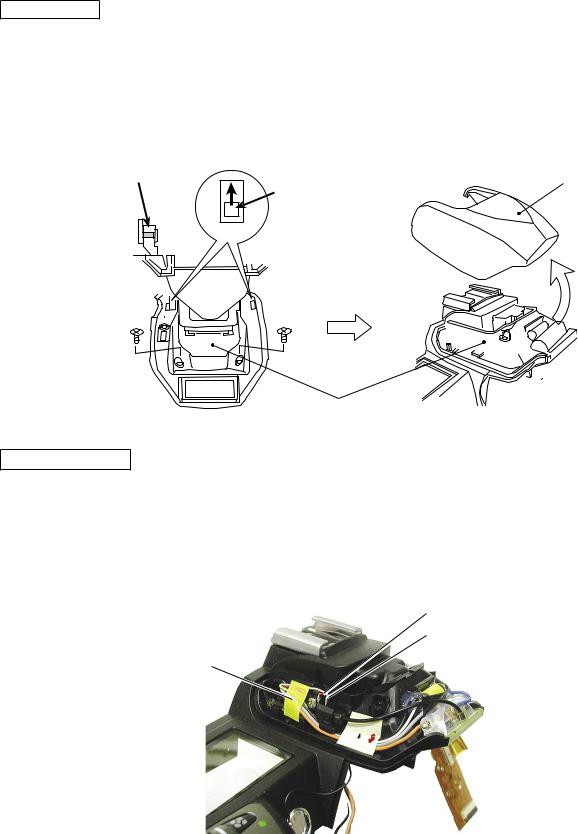
VBA10401-R.3623.A
Disassembly of Top cover unit
SB upper case
Press the pop-up leverApart of the top cover unit so that the built-in SB pops up.Take out 2 screws (#631).
Push from beneath the hooking lever of the SB upper case as shown in Fig.1 . Then slide 2 hooks in the direction of the arrow to remove the lever.
Deactivate pop-up of the SB lower case unit, and remove the SB upper case. Fig.2)
Pop-up leverApart |
|
SB upper case |
|
Hooking lever |
|
|
|
|
|
Fig.1 |
|
#631×2
SB lower case unit
Fig.2
Lighting unit PCB
Unsolder Shield wires
Red: Lighting unit control PCB
White: Lighting unit control PCB
Tape (#709)
- 8 

 -
-
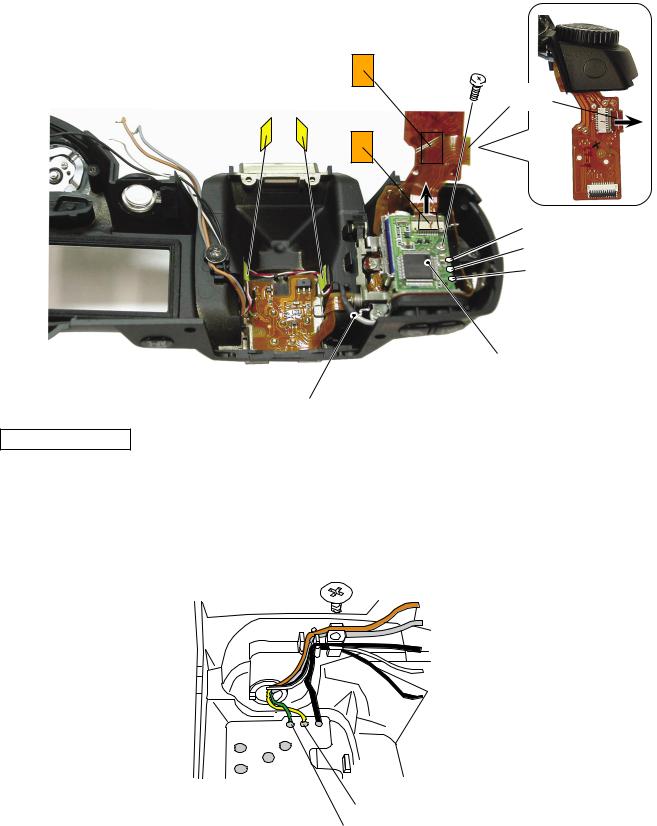
VBA10401-R.3623.A
Remove Lighting unit control PCB, connection FPC, and Shield wires
|
#742 |
|
#607 |
|
Connection |
Tapes (#709×2) |
FPC |
|
#742 |
Black
Red
White
Lighting unit control PCB
Shield wires
SB lower case unit
Remove wire-holding screw/Unsolder wires
#646
Yellow: SB pop-up SW Green: SB pop-up SW
- 9 

 -
-

Remove Flash-up spring
Unhook the Flash-up spring (#305).
Take out the screw (#646) and remove the Flash-up spring (#305).
Remove SB lower case unit
Pull each wire out of holes.
Losen 2 hooks of the collar (#308) to remove it.
Remove the SB case axle (#306).
Detach the SB lower case unit from the top cover.
VBA10401-R.3623.A
#305
 #646
#646
SB lower case unit
#306
#308
#308
2 hooks
- 10 

 -
-

VBA10401-R.3623.A
Mode dial PCB unit, Remote control unit, Top cover FPC
Remove attaching screws, soldering bridges
#642
#635
#608×2
Solder: Pop-up solenoid
5 soldering bridges
Detach Mode dial PCB and Remote control unit from Top cover FPC
|
Tape (#733) |
|
Remote control unit |
Black: DC/DC PCB |
3 soldering bridges |
|
|
|
Top cover FPC |
Both-sided adhesive tape (#464)
Remote control unit
Mode dial PCB
- 11 

 -
-

VBA10401-R.3623.A
Mode dial unit, Release button, Power-supply dial, other small parts
Mode dial unit
#142
|
#386 |
#463 |
|
|
|
|
|
#339 |
|
#387 |
#350 |
|
|
||
|
|
|
#351 |
|
|
#340 |
|
|
|
#453 |
Power-supply dial |
|
|
#352 |
|
|
|
|
|
#340 |
#788 |
#452 |
|
|
|
|
|
#347 |
#766 |
#640 |
|
|
|
|
|
#348 |
|
#326 |
|
#604×2  #381
#381
Accessory shoe, Shoe mold unit, Outer LCD window, other small parts
Shoe base
#318
Shoe mold unit
Outer LCD window |
#311×2 |
#338
 #321
#321

 #322
#322
#654×4
#337×2 #336×2
- 12 

 -
-

VBA10401-R.3623.A
Preview SW unit
Remove the solders of 3 wires as shown right, and take out the screw (#649) to detach the preview SW unit.
Yellow
|
Green |
Preview SW unit |
Blue |
|
|
#649 |
|
Disconnect from ConnectorsRemove the FPC , , and from each connector in order.
Separate Front and Rear bodies
#634×4 |
Rear body |

 Front body
Front body



 #646 #699×3
#646 #699×3 

#642×3
- 13 

 -
-

VBA10401-R.3623.A
2. Front Body
Disconnect Connectors
Disconnect the FPC , , , and from each connector in order.
#B1008 |
#B2163 |
#1026 |
#B1025
Eyepiece unitMetering FPC unit
#B2008 #291×2
Take out 2 screws (#631) so that the eyepiece unit
(#B261) with the Metering FPC unit(#B2008) attached can be removed.
#B2008 |
|
#290 |
|
#B261 |
|
|
|
#B261
Note: The eyepiece unit (#B261) and Metering FPC unit (#B2008) is attached with the adhesive. Unless
#631×2 replacement is necessary, do NOT disassemble them. In case of disassembling them or turning the screws
(#291), AE CCD position adjustment (ref.Assembly Chapter) is necessary.
- 14 

 -
-
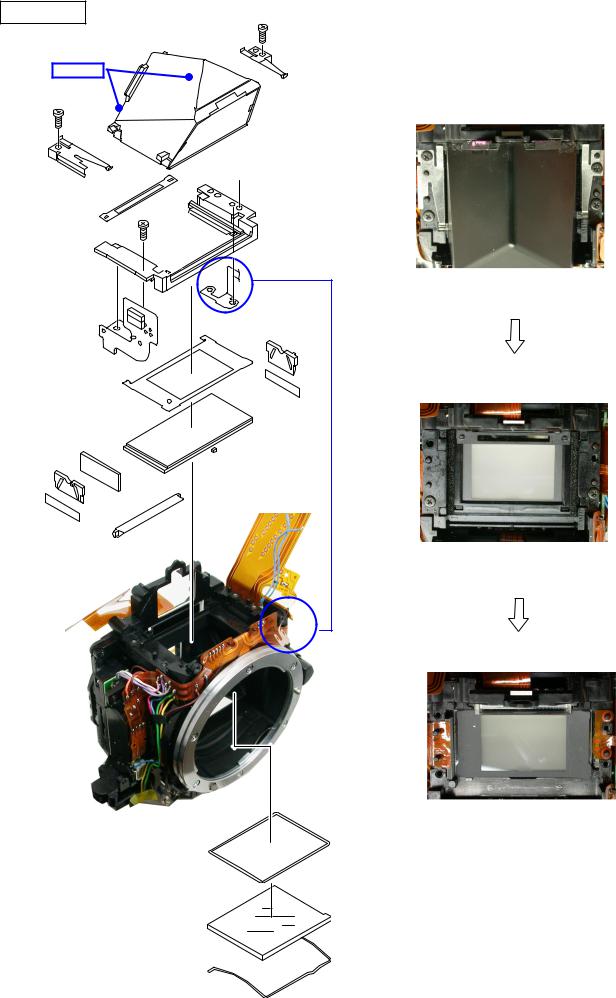
VBA10401-R.3623.A
Penta unit
|
#B4 |
#642×2 |
|
|
|
Adhesive |
|
#256 |
|
|


 #642×2 #255
#642×2 #255 
#283
#B277

#B1021 |
#280 |
|
#282 |
#B279 |
|
#278 |
#1046 |
|
#739 |
||
|
||
#280 |
|
|
#B279 |
#G9 |
|
|
#297
#G3
#284
- 15 

 -
-

VBA10401-R.3623.A
Main PCB
Remove the front body FPC (#B1009) from the connector.
Remove the solders and soldering bridges of 7 #B1009 wires.
Blue×2:
Top cover FPC
Yellow: 
A/M change sw
Soldering bridge
Black:
A/M change sw
Brown:DC-DC
Black:AF motor
Red:AF motor
Take out the screws (#658 and #632) to
detach the main PCB (#B2001) from the |
|
#632 |
front plate. |
|
|
|
|
|
Remove the connection FPC (#B1004) |
|
|
from the connector. |
#B2001 |
#658 |
|
#B1004 Connector (backside)
Front plate
- 16 

 -
-

VBA10401-R.3623.A
AF sensor unit
636×3
Take out 3 screws (#636) with Hexagonal wrench, and remove theAF sensor unit (#B2163).
3 springs (#170) come off, too.
#728
AF sensor unit #B2163
170×3
Shutter unit |
|
Remove the solders of 6 wires. |
#607 |
Take out the screws (#607 and #627) to |
#627 |
#B31 |
|
detach the shutter unit (#B31). |
|
Purple Gray
Pink White
Brown
Orange
- 17 

 -
-
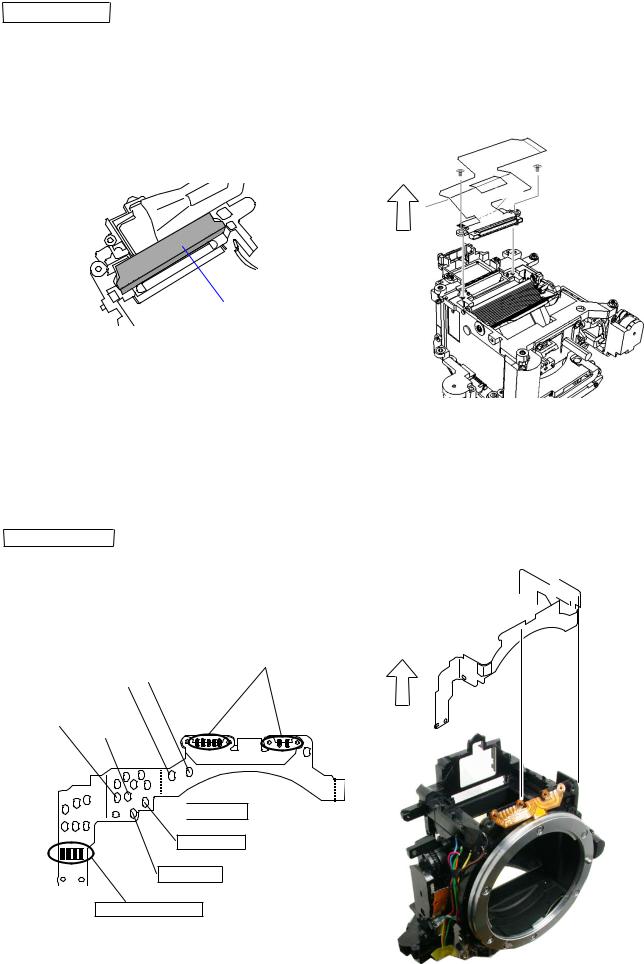
VBA10401-R.3623.A
Inner LCD unit
Remove the tape (#797).
Take out 2 screws (#653) to remove the inner LCD unit (#B2010).
#B2010
#653×2
#797
Front body FPC
|
|
|
|
|
|
Black |
|
|
|
|
|
Brown |
|
|
Soldering bridges |
||
|
|
|
Fmin |
|
Fmin |
|
|
|
|
|
|
|
|
|
|||
|
|
|
|
|
|
|
||
|
|
|
|
|
|
|
|
|
|
|
|
|
|
||||
Red:Mg |
|
|
|
|||||
|
|
Blue:Mg |
|
|
|
|
|
|
|
|
|
|
|
|
|
||
Front body FPC 

 #1009
#1009 


 Green SQ
Green SQ
Yellow SQ
Orange SQ
Soldering bridges
- 18 

 -
-

VBA10401-R.3623.A
Aperture control unit
Procedure
1.Take out 3 screws (#642).
2. Remove the screw (#661), spring (#214) and lever (#254).
3.Lock the mirror-up lever (#203) with the preview locking lever (#222).
4.When the aperture lever is pressed down with finger, the aperture coupling lever (#207) moves in the direction of arrow ( ).
5.In state of 4., remove the aperture control unit (#B241) by pulling it in the direction indicated by arrow ( ) while letting the arm (#B241) escape.
#642×3
#B241
Front body viewed from the bottom
Lock #203 with this lever.
#222 #203
 Aperture lever
Aperture lever
#B241
Arrow
Arrow
#254 |
|
|
|
|
#214 |
|
|
|
|
#207 |
Arm of #B241 |
|||
#661 |
||||
- 19 

 -
-

AF driving unit
Lens release button
Vertical lever
Horizontal lever
First, remove the horizontal lever (#193).
#B172
#637×2 



Bayonet unit
A/M-change SW unit
VBA10401-R.3623.A
#642


 #115 #621
#115 #621 



#119

 #B116
#B116

 #630
#630 



 #122
#122
 #191
#191
#185  #195
#195
#193 

 #630
#630
#642 |
Soldering bridge of |
|
|
|
#126 and #114 |
#126 |
#B125 |
|

 #114
#114
|
#123 |
#B2113 |
|
|
|
||
|
|
#607 |
#645×2 |
|
|
|
|
|
|
|
#189 |
#132 |
|
|
|
|
#135 |
|
#648×5 |
|
#113×3 |
|
|
#131 |
|
|
|
|
|
#111 |
|
|
|
|
|
|
|
|
#660 |
- 20 

 -
-

VBA10401-R.3623.A
Aperture lever unit F-min Switch unit Preview locking lever unit
|
|
#190 |
|
|
|
|
#206 |
#203 |
|
|
|
|
|
|
|
|
|
|
|
#209 |
|
|
|
|
|
#207 |
|
|
|
|
|
#210 |
|
|
|
|
#208 |
|
#205 |
|
|
|
|
|
|
|
|
#639 |
|
#212 |
#375 |
|
|
|
#375 |
#642 |
|
|
#222 |
|
|
|
|
||
|
|
#213 |
|
|
|
|
|
|
#202 |
#224 |
|
|
|
|
|
||
|
|
|
#134 |
|
#223 |
|
|
|
#133 |
|
#221 |
|
|
|
#624 |
#652 |
Mirror unit |
#B2231 |
|
#234
Note that 2 pins (#199) and the pin (#236) are attached with the Super X.(C-8008B)
#238
#239
#199
#236
#199
- 21 

 -
-
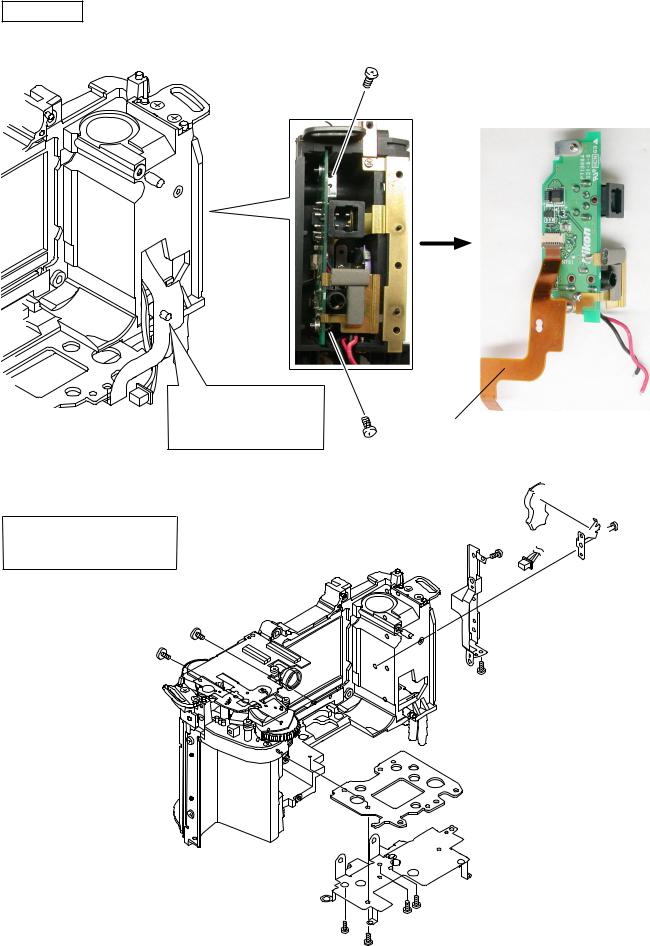
3. Rear body
IF-PCB
Take out 2 screws (#610) to remove the IF-PCB from the rear body.
#610×2
Rear body
VBA10401-R.3623.A
IF-PCB
Remove the connection FPC (#1061) from the rear body pin.
Bottom Base unitSecondary battery unit
#633×2
#1061
 #1059
#1059
#691 #75 





#73
#610×2
#66
#B103
#635×4
- 22 

 -
-

CF-PCB
Take out 2 screws (#635) to remove the CF-PCB and CF ground plate (#469).
#635×2
#467 |
Remove FPC by pulling |
|
aside in the direction of |
||
|
||
|
the arrow. |
Rear body
VBA10401-R.3623.A
CF-PCB
#B467
#B1034
 #663×2
#663×2  #1064
#1064
Main condenser
Remove the solders of 2 wires (pink and blue) on the SB-PCB of the front of the rear body.
Remove the 2 wires (pink and blue) as |
#754×2 |
described left while setting aside by |
|
passing them through this hole. |
|
|
|
 Blue:Main condenser
Blue:Main condenser
SB-PCB |
#1043 |
|
Pink:Main condenser
- 23 

 -
-
